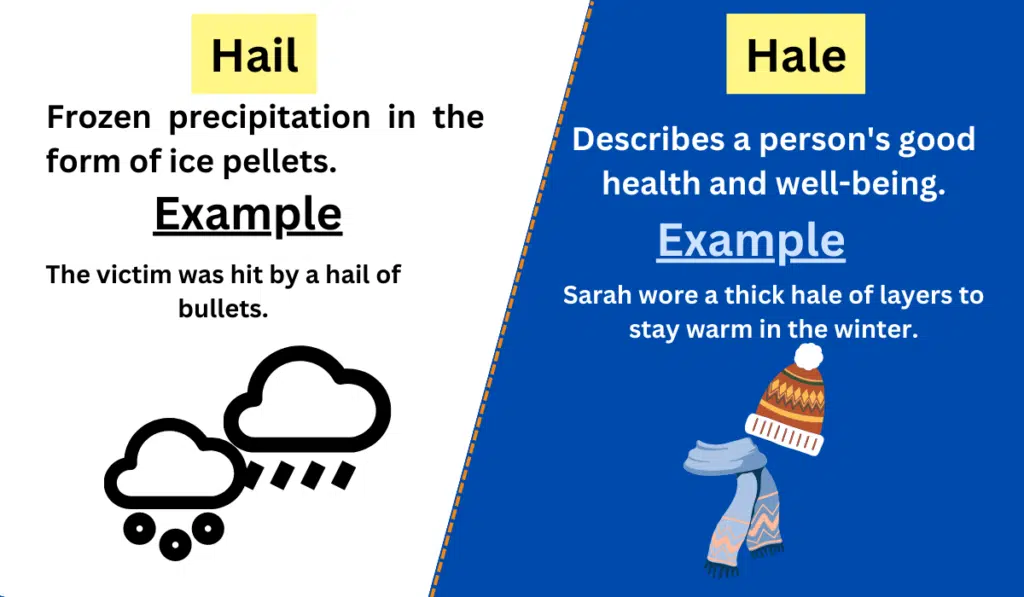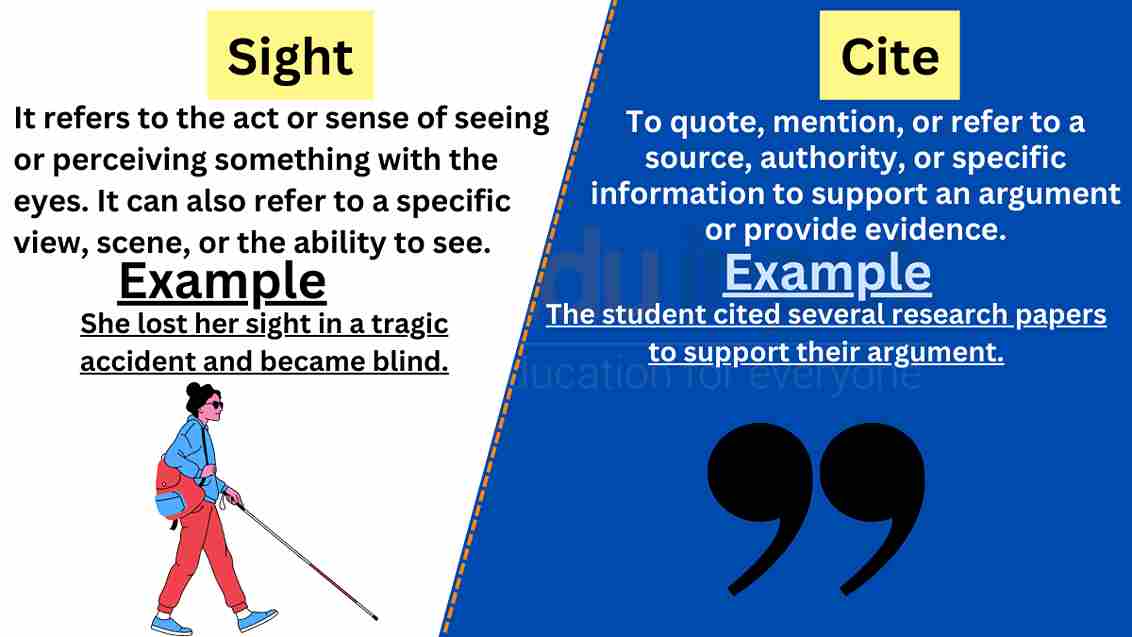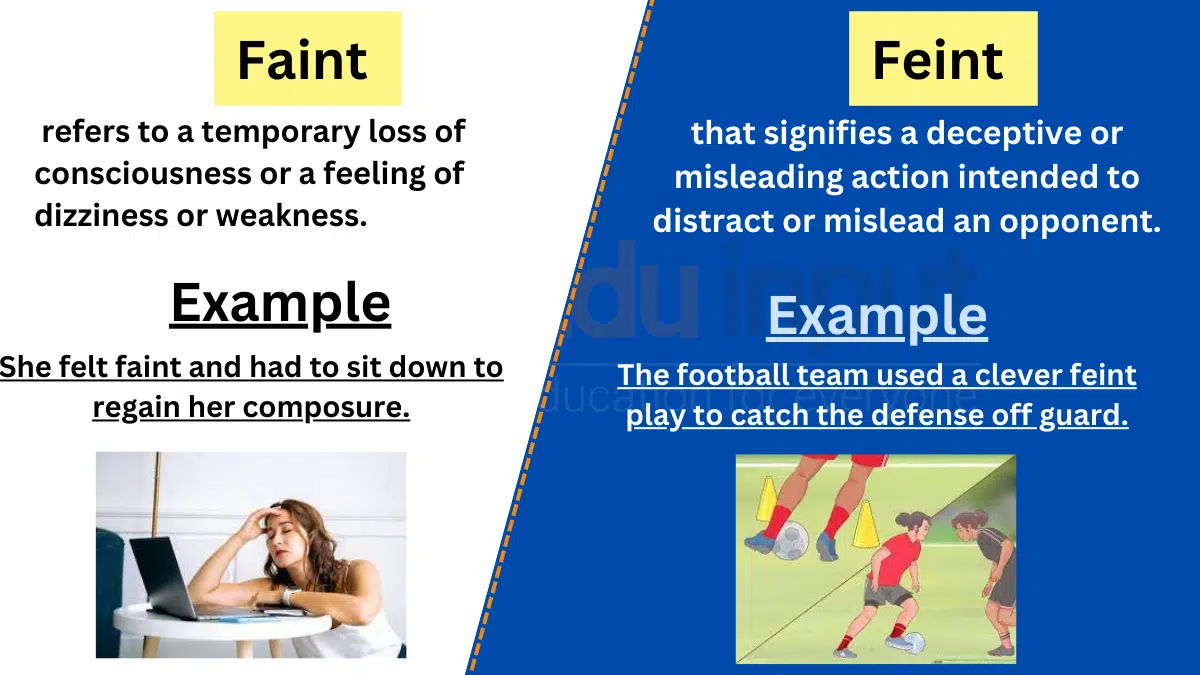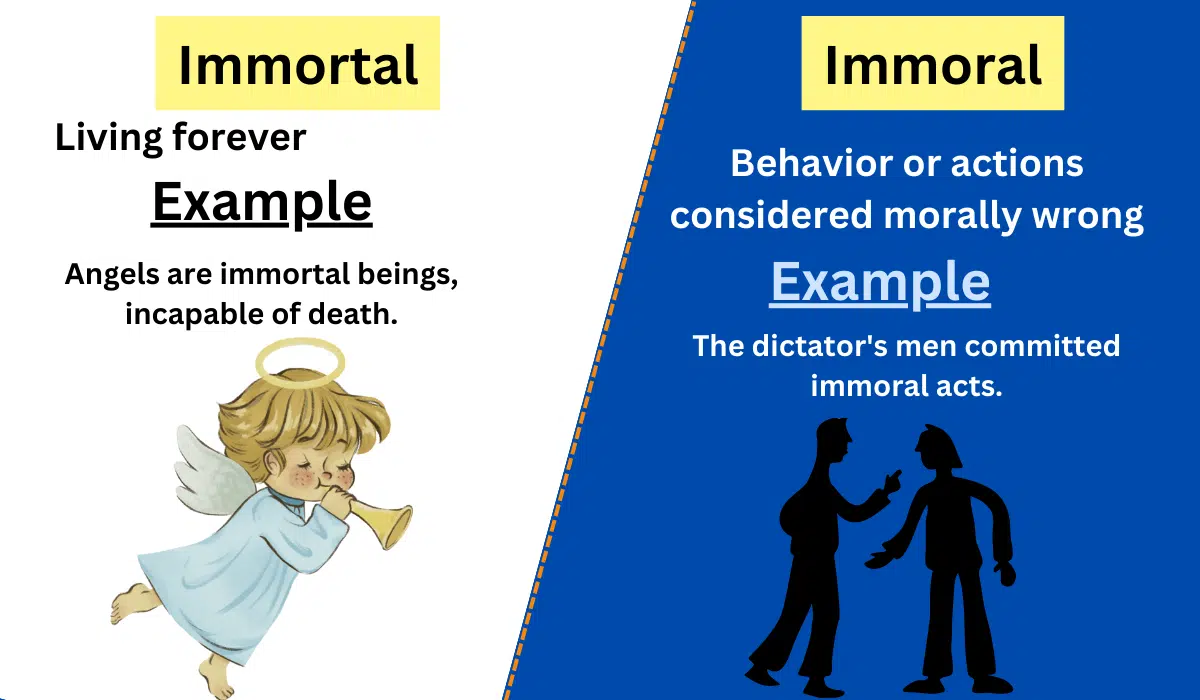Hail vs. Hale- Difference between and example
In the English language, the words “hail” and “hale” may sound similar but have different meanings and usage.

In this article, we will explore the distinctions between “hail” and “hale” to clarify their definitions and provide examples of their usage.
By understanding these terms, we can communicate more accurately and avoid confusion.
Let’s delve into the meanings of “hail” and “hale” to enhance our language skills.
Meanings and Examples
Hail Definition
The definition of hail is;
Definition: “Hail” refers to frozen precipitation in the form of ice pellets that fall from the sky during severe weather conditions, typically in the form of hailstorms. It can also be used as a verb to greet or call out to someone.
Examples of Hail
- The hailstones were the size of golf balls, causing damage to cars and windows.
- As I walked down the street, someone hailed me from across the road.
- The weather forecast warned of possible hailstorms in the afternoon.
Hale Definition
The definition of hale is;
Definition: “Hale” describes a person’s health and well-being, specifically indicating a state of robustness, vigor, and good physical condition.
Examples of Hale
- Despite his advanced age, he remained hale and hearty, enjoying an active lifestyle.
- The doctor complimented her on her hale complexion and overall vitality.
- Regular exercise and a balanced diet contribute to maintaining a hale body.
Difference between Hail and Hale
| Category | Hail | Hale |
| Meaning | Frozen precipitation in the form of ice pellets | Describes a person’s good health and well-being |
| Example | “The hailstones were the size of golf balls, causing damage to cars and windows.” | “Despite his advanced age, he remained hale and hearty, enjoying an active lifestyle.” |
| Usage | Weather conditions, meteorology | Describing physical well-being and vitality |
| Context | Severe weather, precipitation | Personal health, aging gracefully |
Usage in a Paragraph
Imagine a scenario where you are hiking in the mountains and suddenly, dark clouds gather overhead. The wind picks up, and the temperature drops.
As you continue your trek, you start to hear a distinctive sound – the pitter-patter of small ice pellets hitting the ground. You realize that hail is starting to fall, and you quickly seek shelter to protect yourself from the icy projectiles.
In this context, “hail” refers to the frozen precipitation that poses a threat during severe weather conditions. It is a phenomenon that demands caution and requires taking appropriate measures to ensure safety.
Once the storm passes and you emerge from your temporary shelter, you notice a fellow hiker who stands tall and energetic despite the challenging weather. Their rosy cheeks and lively demeanor indicate a state of good health and vitality.
This person appears hale and hearty, exemplifying physical well-being and resilience. Their ability to navigate the adverse weather conditions with ease and continue the hike showcases their robustness and overall health.
Recognizing the difference between “hail” and “hale” allows us to communicate effectively in various contexts. “Hail” refers to frozen precipitation during severe weather, while “hale” pertains to a person’s good health and well-being.
By understanding the nuances of these words, we can accurately describe weather phenomena and convey the state of someone’s physical condition. Whether discussing storm.







Leave a Reply